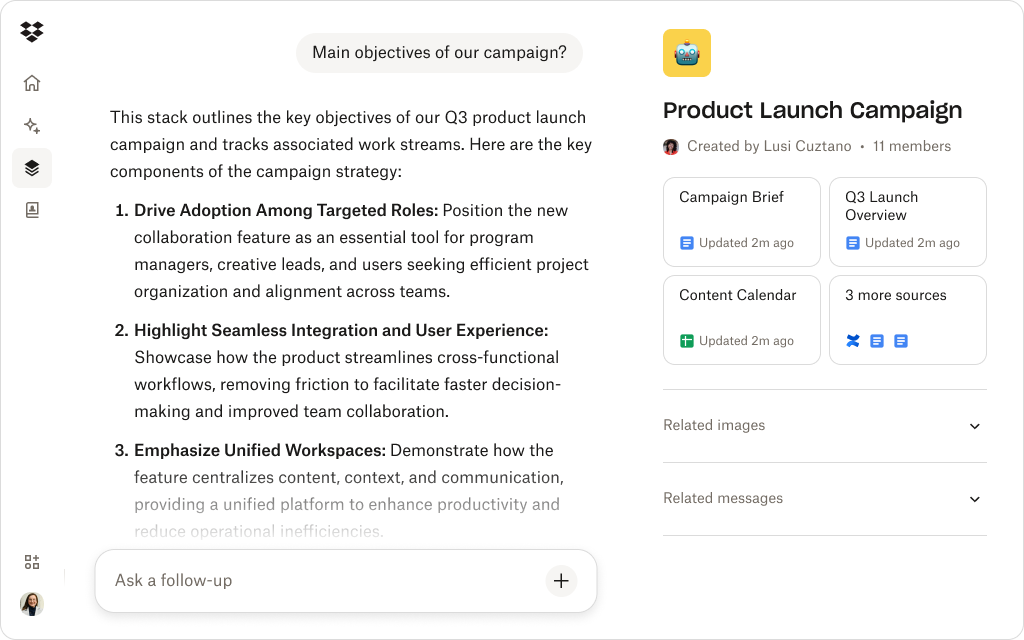
Can AI truly capture brand voice and land on taglines that stick in minds?
In marketing, a tagline is the short, memorable phrase that captures a brand’s essence—its promise, values, and personality. It’s what consumers remember long after the ad ends.
A great tagline can do what pages of copy can’t—make people feel something. It’s the rallying cry of a brand—all distilled into a few words. That’s why creative teams guard taglines so fiercely. They’re key to identity.
However, as AI tools become part of everyday creative workflows, a question keeps surfacing—can AI truly know brand nuance—and write something that resonates like a human would?
AI is finding a way into every corner of creative work, and that includes one of the most closely guarded spaces of all—the creation of taglines. Some are finding great results. Others are running into clichés and tone misfires. The truth sits somewhere in between—AI can accelerate the process of writing, but it still depends on human intuition to shape what’s true, distinctive, and emotionally sticky.
This piece explores where AI excels, where it still falls short, and how the right tools help teams find the balance—turning AI from an unreliable generator into a trusty creative partner that keeps every idea on-brand.

Why marketers instinctively distrust AI for taglines
Taglines are crucial. They're a brand's first impression and can often be loaded with emotion and provide a historical context too. As a result, marketers are usually careful about using AI for them—because they value creativity and want AI to support, not replace, human input.
AI has earned skepticism in creative realms. Marketing teams worry about:
- Loss of originality or formulaic output
- Brand-safety risks (tone, meaning, connotation)
- Lack of knowledge about brand history, nuance, and cultural context
These concerns are valid. Taglines are often symbolic, and missteps can harm brand perception.
AI tools like Dropbox Dash can still help marketers. The right tools mean AI can understand a team's work, brand, and audience. Then it becomes a creative partner rather than a wildcard generator. AI won't replace human ideas—but it will help to add data to them. People still create the best ideas, AI just helps find them faster.
What makes a tagline “stick”—creative criteria
A great tagline feels effortless. It’s the product of strategy, storytelling, and instinct, distilled into just a few words.
Marketers and creatives spend weeks finding the right phrase because a tagline carries heavy expectations—it must be short but powerful, familiar yet fresh, and simple enough to remember while complex enough to inspire. To understand where (and if) AI can contribute, we first have to unpack what makes a tagline actually work.
Before we evaluate AI tools, it helps to define what makes a tagline effective. Key attributes include:
- Memorability—brevity, rhythm, or word choice
- Emotional resonance—evoking feeling or identity
- Clarity + promise—conveys a benefit or differentiator
- Brand voice and tone alignment—matches overall brand personality
- Flexibility—works across channels, media, and formats
Human writers lean on brand history, audience empathy, and subtle cultural cues to hit these marks.
AI can identify patterns in language, but what it lacks is intent. It can sense what sounds catchy—but not what feels true. That’s why even the best AI taglines often miss the spark that makes a phrase memorable. The future of creative briefing involves giving AI access to brand context, enabling it to help spark ideas that meet these criteria.
With tools like Dash Chat, teams can keep their human intuition in the driver’s seat—while letting AI handle the heavy lift of exploration, iteration, and inspiration.
Where AI shines—and where it struggles—in tagline writing
AI has become a surprisingly capable brainstorming partner. It can generate hundreds of ideas in seconds, sparking creative directions that might take a human team hours to explore.
However, when it comes to something as symbolic as a tagline—a brand’s signature—speed isn’t everything. The real question is how well AI can balance creative freedom with brand fidelity. Understanding both sides of its performance helps us see where AI adds value and where human judgment still leads the way.
Strengths of using AI for taglines include:
- Rapid ideation—AI can spin dozens of tagline options in seconds
- Variation—it can explore tone shifts (playful, serious, bold)
- Inspiration—useful when human creativity hits a wall
Weaknesses and risks of using AI for taglines include:
- Surface-levelness—AI may lean into clichés or generic phrasing
- Lack of nuance—it can miss inflection, cultural subtext, or brand legacy
- Tone mismatch—without guardrails, output can deviate from brand voice
- Repetition or overuse—similar taglines may appear across industries
In research on AI co-creation for advertising by Cornell University, structured inputs help improve brand alignment and transparency. This supports the idea that AI is not a creative auteur—but more like a collaborator or assistant.
AI excels at momentum more than meaning. It’s the spark that gets an ideas session moving, but it still needs a human to refine, contextualize, and decide what fits. But, when combined with contextual data—like brand tones, audience insights, and past campaign assets—AI tools such as Dash Chat become strategic creative partners.
The best results come when humans define the direction, and AI helps expand the possibilities—working together, creating something faster, sharper, and unmistakably on-brand.
How Dash safeguards brand voice when using AI for taglines
The biggest fear with AI is that it’ll sound like someone else entirely. A single off-tone tagline can chip away at years of carefully built brand trust.
That’s why AI-powered Dash features are designed not to chase novelty for novelty’s sake, but to keep creativity firmly grounded in your company’s authentic voice. Instead of generating in a vacuum, Dash connects your apps and shared data to write with your brand’s history, tone, and context built in.
Here are a few ways AI capabilities in Dash respect your brand guidelines and reduce creative risk:
- Brand voice filters in Dash Chat: Dash Chat can be constrained by tone rules or style guides you define, so outputs reflect your approved vocabulary.
- Secure context linking: When prompt inputs draw from your brand’s existing materials (messaging documents, past taglines, tone briefs, and other files), Dash Chat has all the context to stay on-brand.
- Version control and review: Each AI-powered tagline output is easily versioned. This means you can compare variants, see edit history, and trace who approved what.
- Collaborative refinement: Teams can then co-edit AI outputs, comment on files, recycle fragments, or combine ideas in all the tools they already use. This means that AI accelerates but doesn’t replace human judgment.
These capabilities ensure that all AI output is anchored in your brand instead of a disconnected mess.
Dash was built with brand guardians in mind. It’s about safeguarding it while scaling your team’s creative reach. With Dash Chat, every suggestion stays rooted in the language, tone, and strategy you’ve already approved. This leads to faster ideation, fewer missteps, and taglines that still sound unmistakably like you.
Bring order to competing marketing requests with Dash
Dash helps you see every project, group requests by priority, and act on what matters most.
Workflow tips: Refining AI taglines with human oversight
Even the smartest AI needs a steady creative hand. The secret to strong AI-generated taglines is process. Teams that treat AI as a partner—instead of a replacement—get sharper ideas, faster iterations, and less wasted time. By bringing structure and human oversight to the workflow, you can turn AI’s raw speed into brand-ready creativity.
To get the best results from AI, treat it like a creative partner. Here’s how to navigate the process:
- Start with structured prompts: Give the AI context about your brand values, audience, and tone of voice—Dash already does this. Include what to avoid as well. The more precise your input, the more relevant your output.
- Generate multiple versions: Ask for several tagline options with different tones—such as playful, confident, direct, or aspirational. This helps you explore creative directions side by side.
- Triage and score the results: Evaluate each tagline against your brand’s criteria for stickiness—such as clarity, emotional pull, and originality. Keep what fits, refine what’s close, and discard the rest.
- Blend and remix: Strong taglines often come from combining elements of several ideas. Use AI-powered tools like Dash as raw material, then apply human editing to make it distinctively yours.
- Test lightly before rollout: Run internal polls or quick A/B tests to see what resonates within your team or department. This ensures every tagline aligns with your audience and brand perception.
This way, AI can accelerate creative exploration—but a human perspective gives ideas staying power. Over time, your team can save prompt templates and examples that reliably produce better, more on-brand starting points.
With Dash Chat, teams can build and refine repeatable workflows, saving successful prompts and brand-approved examples along the way. The more your team collaborates with Dash, the smarter it gets—helping you produce taglines that move from AI-powered to undeniably on-brand.

Write sharper, brand-safe taglines with Dropbox Dash
AI can’t replace creative intuition, but it can make the process faster and more consistent. With Dash Chat, teams can brainstorm dozens of tagline ideas securely, all while staying within your brand’s voice and tone guidelines.
When every output is versioned, contextualized, and searchable, you spend less time rewriting and more refining what truly sticks. See how Dash helps write AI-powered copy that stays on brand—contact sales or try a demo.
Frequently asked questions
Not reliably. AI is excellent at ideation and variation, but nuanced brand expression, empathy, and deeper strategic insight still require human craft. Think of AI as your creative intern—fast, helpful, but still learning from your direction.
Use highly specific prompts (brand attributes, audience, tone), and always filter with human review. Reject or evolve any output that feels derivative. The more context you feed it, the more originality you get back.
Start with low-stakes campaigns or internal use. Define prompt templates, flag best and worst outputs, and gradually expand usage as confidence builds. Build trust in the process first—then scale creativity with confidence.
Get started with Dash
.webp)

.svg)


